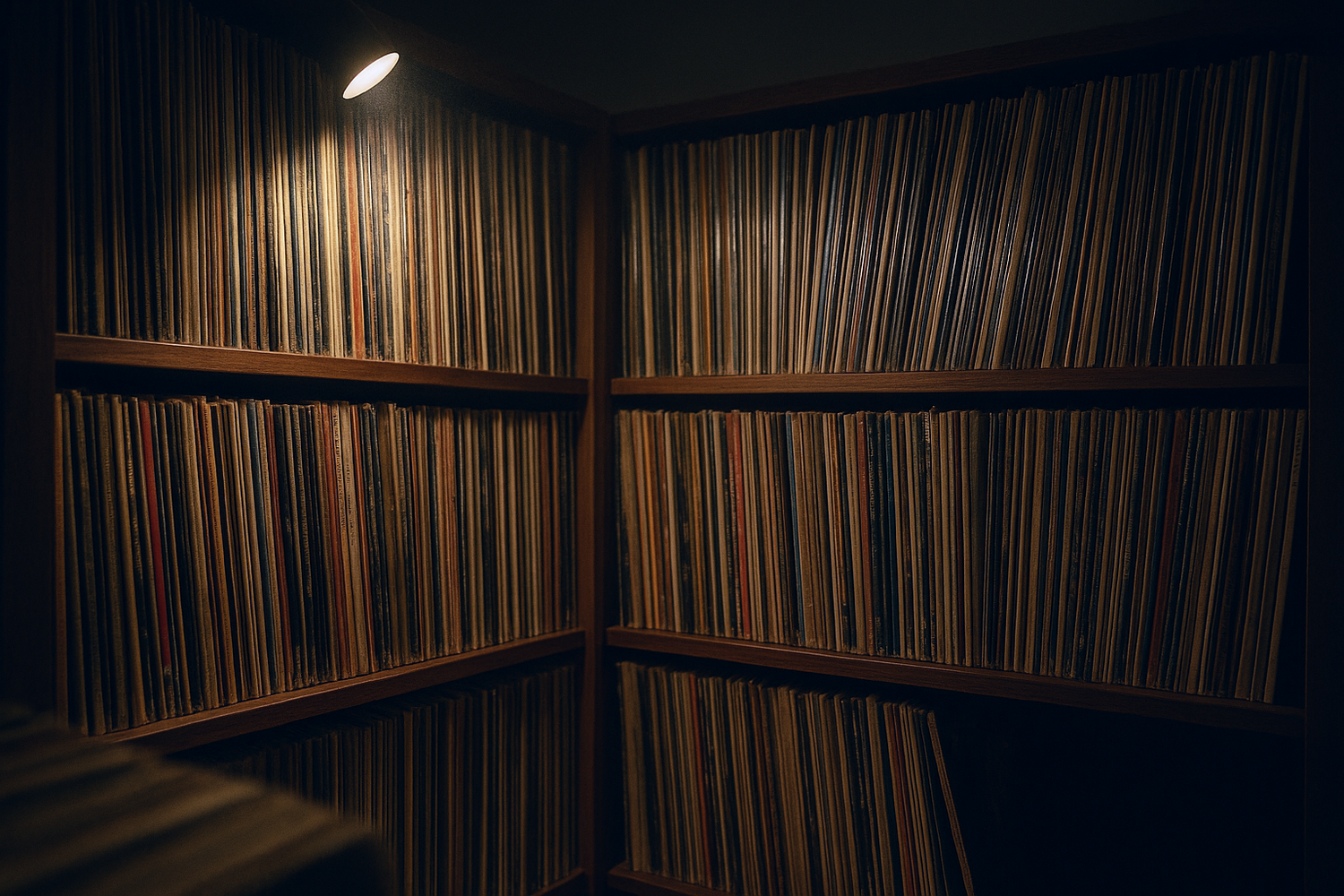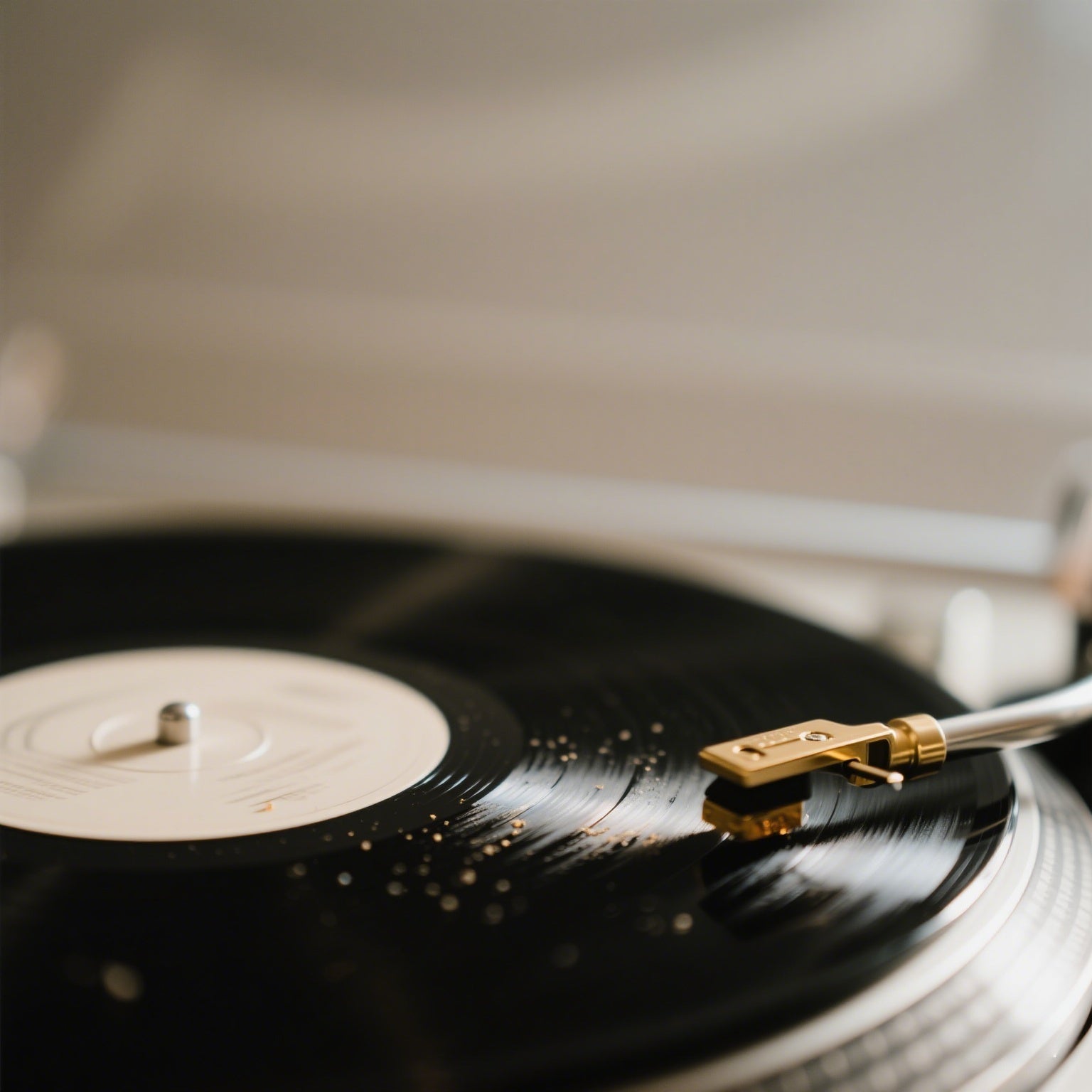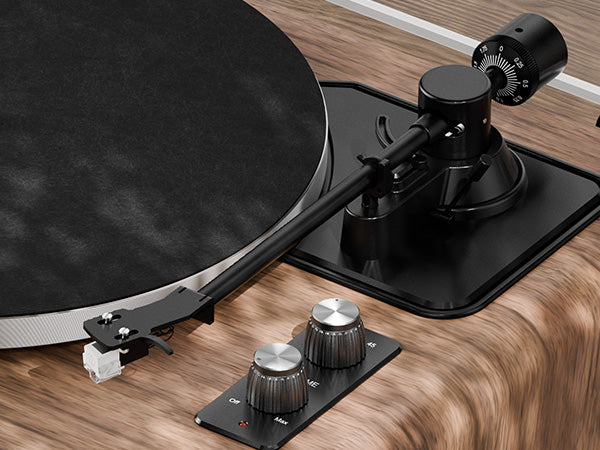The allure of vintage audio equipment, particularly turntables, is undeniable. It’s a siren song of warm analog sound, tangible mechanics, and a connection to a rich musical past. For many, it’s a conscious step away from the ephemeral nature of digital music, a desire to engage with music as a physical artifact. But let's be clear: diving into the world of vintage record players isn't just about basking in nostalgic glow. It’s about understanding what made these machines tick, what separates the timeless classics from the charming-but-flawed, and what it really takes to bring one back to its former glory. This isn't a journey for the faint of heart, but for the discerning enthusiast, the rewards can be immense.
Many are drawn to vintage for reasons that transcend mere sonics. It's the satisfying clunk of a mechanical switch, the visual ballet of the tonearm, the sheer aesthetic presence of a well-built machine from a bygone era. This tactile engagement is a powerful antidote to the often sterile interaction with today's technology. At XJ-HOME, we appreciate this deep connection to the physicality of audio, believing that the experience of music is multi-sensory. But before you embark on your treasure hunt, let's arm you with knowledge.
First Principles: The Unchanging Truths of Turntable Performance
Fashion changes, technology evolves, but the fundamental physics of dragging a diamond through a plastic groove to reproduce sound remain constant. Understanding these first principles is crucial, whether you're eyeing a Garrard from the '60s or a brand-new deck.
-
Speed Stability: The Unwavering Pulse
The single most critical factor is the platter's ability to rotate at a precise and consistent speed (typically 33⅓ or 45 RPM). Any deviation—wow (slow variations) or flutter (fast variations)—smears the sound, robbing music of its pace, rhythm, and timing. Vintage tables employed various drive systems:
-
Idler Wheel: Common in older decks (e.g., many Garrards, Lencos). A rubber wheel connects the motor to the platter. Pros: High torque, robust. Cons: Potential for rumble (motor noise transmitted to platter) if not well-engineered or maintained. The rubber wheel itself is a wear item.
-
Belt Drive: A rubber belt isolates the motor from the platter (e.g., classic AR XA, Thorens TD-150/160). Pros: Good motor isolation, simpler mechanics. Cons: Belts stretch and perish; speed can be less immediately stable than a good direct drive or idler.
-
Direct Drive: The platter sits directly on the motor spindle (e.g., Technics SL-1200 and its ancestors). Pros: Excellent speed stability, fast start-up. Cons: Early or poorly designed direct drives could suffer from "cogging" (subtle speed pulsations) or transmit motor noise.
-
-
Vibration: The Unseen Enemy
A turntable is a mechanical system designed to read microscopic vibrations in a record groove. Any unwanted vibration—from the motor, the bearings, the plinth, or the outside world—will be amplified along with the music, muddying the sound.
-
Plinth (Base): Its mass and material are key. Heavier, non-resonant plinths (think dense wood, slate, or well-damped composite) help absorb or dissipate vibrations. The flimsy, resonant plastic plinths of later, cheaper vintage units are a significant sonic compromise.
-
Isolation: Feet and suspension systems (like the sprung sub-chassis on many Thorens or AR tables) are designed to decouple the sensitive platter and tonearm from external disturbances.
-
-
The Tonearm & Cartridge: A Delicate Partnership
The tonearm's job is to hold the cartridge at the correct angle and allow the stylus to trace the groove with minimal friction and optimal tracking force.
-
Tonearm Mass & Bearings: Low-friction bearings are essential for free movement. The effective mass of the tonearm must be compatible with the compliance (springiness of the stylus suspension) of the chosen cartridge for optimal performance. Mismatches lead to poor tracking or exaggerated resonances. For instance, a high-compliance cartridge (like many vintage Shures) typically pairs best with a low-mass tonearm. Conversely, lower compliance cartridges, which were less common in the heyday of some vintage lines but became more prevalent later, prefer medium to high-mass arms.
-
Cartridge Alignment: Precise alignment (overhang, zenith, azimuth) is non-negotiable for good sound and minimizing record wear. If a vintage table doesn't allow for these adjustments easily, or if the arm has worn bearings, it’s a significant red flag.
-
The Vintage Hunt: Navigating Potential Pitfalls & Hidden Gems
Now that we've covered the "what makes it work," let's look at the "what to look for" and "what to look out for."
Blind Spots & Overlooked Aspects:
-
"Serviced" vs. "Restored": These terms are not interchangeable. "Serviced" might mean it powers on and spins. "Restored" implies a much deeper dive: capacitors replaced, bearings cleaned and lubricated, motor checked, worn parts replaced. Ask for specifics and, if possible, receipts or documentation of work done.
-
The "It Was My Dad's" Sentimentality Trap: While emotionally resonant, this doesn't guarantee quality or suitability. Judge the turntable on its mechanical and electrical merits, not just its provenance.
-
Automatic Mechanisms: Many vintage tables featured complex automatic start/stop/return functions. While convenient, these mechanisms add complexity and potential points of failure. If not perfectly functioning, they can impair sonic performance or even damage records. Simpler, manual tables often have fewer things to go wrong and can offer better sound quality for the same initial investment.
-
Built-in Phono Preamps (in older consoles/all-in-ones): Often of rudimentary quality. If you're serious about sound, you'll likely want to bypass this and use an external phono stage.
-
Proprietary Parts & Unobtanium: Some beautiful vintage tables use unique headshells, counterweights, or motor components that are now impossible to find. Research parts availability before you buy. A stunning deck that can't be made functional is just furniture.
Multi-Dimensional Checklist for a Potential Purchase:
-
Physical Condition:
-
Plinth: Cracks, water damage, delamination?
-
Platter: Bent, warped, or corroded? Does it spin true without wobbling?
-
Tonearm: Bearings smooth and without play (gently try to wiggle it)? Is the headshell original and in good condition? Are all counterweights and anti-skate mechanisms present and functional? Cueing mechanism smooth?
-
Dust Cover: Present? Cracked? Hinges intact? These can be surprisingly expensive to replace.
-
Wiring: Original tonearm wiring can become brittle and corroded. RCA cables and connectors okay?
-
-
Operational Checks (If possible, test with a record you don't mind sacrificing):
-
Power Up: Any hums, pops, or strange noises from the unit itself?
-
Speed Stability: Use a strobe disc or app to check speed accuracy at both 33 and 45 RPM. Does it hold speed, or does it drift or hunt?
-
Motor Noise: Listen closely (with the stylus off the record) for any audible rumble or grinding from the motor being transmitted through the plinth.
-
Automatic Functions (if applicable): Do they work smoothly and accurately? Does the tonearm land gently? Does it return correctly?
-
Sound Output (if connected to an amp): Listen for hum (grounding issues?), channel imbalances, excessive noise.
-
-
The "Is It Worth It?" Calculation:
-
Market Value: Research what similar models in similar condition are selling for. Sites like eBay completed listings can be a good (though not definitive) guide.
-
Restoration Costs: Factor in the potential cost of a new stylus (almost always needed), a new belt, lubrication, professional servicing if you can't DIY, or replacement of any broken/missing parts. A "bargain" table can quickly become a money pit.
-
Your DIY Skills & Willingness: Are you comfortable performing basic maintenance and setup? If not, professional help adds to the cost.
-
Challenging Conventional Wisdom: Beyond "Warmth"
A common refrain is that vintage turntables sound "warm." While true for many, this can also be a euphemism for rolled-off high frequencies, poor detail retrieval, or excessive resonance. A truly great vintage turntable, properly set up and restored, should offer not just warmth, but also detail, dynamics, and a lively, engaging presentation. Don't settle for a pleasantly fuzzy sound if precision and clarity are what you truly seek.
Moreover, the idea that any vintage table is automatically superior to a modern entry-level or mid-range deck is a myth. A well-designed new turntable from a reputable manufacturer can often outperform a poorly maintained or inherently flawed vintage model, especially in terms of noise floor and speed stability, without the headaches of restoration. The goal is superior sound and reliable performance, not just owning an antique.
Connecting the Dots: System Synergy
A vintage turntable doesn't exist in a vacuum. Its performance is intrinsically linked to the cartridge, phono preamplifier, amplifier, and speakers it's paired with. A high-end turntable from the 70s might sound underwhelming if fed into a budget amplifier from the same era with failing capacitors and tired speakers.
Consider the output level of the chosen vintage cartridge and the input sensitivity and loading requirements of your phono stage. Many classic moving magnet cartridges, for example, work well into a standard 47k ohm load. Understanding these relationships is key to unlocking the full potential of your vintage find. For those looking to build a system with carefully matched components that honor the spirit of classic audio design but with modern reliability, exploring the offerings at XJ-HOME (https://xenonjade.com) can provide inspiration and high-quality options that complement vintage sensibilities.
Authoritative Resources for the Journey:
-
Vinyl Engine (https://www.vinylengine.com/): An invaluable resource for turntable manuals, specifications, and a vibrant forum community. Registration is free and highly recommended for anyone serious about vintage turntables.
-
Audiokarma (https://audiokarma.org/forums/index.php): Another excellent forum with dedicated sections for turntables and vintage audio, full of knowledgeable enthusiasts and restoration experts.
The Final Groove: Is Vintage Right for You?
Buying a vintage record player can be an incredibly rewarding experience. It’s a chance to own a piece of audio history, to engage with music in a deeply satisfying way, and potentially, to achieve a level of sonic performance that would cost significantly more in the new market—if you choose wisely and are prepared for the journey.
It demands patience, research, and a willingness to get your hands a little dirty (or open your wallet for expert help). But for those who embrace the challenge, the rich, authentic sound and timeless appeal of a well-chosen, well-restored vintage turntable are truly something special. Approach with open eyes, an educated mind, and a passion for the groove.





Leave a comment
All comments are moderated before being published.
This site is protected by hCaptcha and the hCaptcha Privacy Policy and Terms of Service apply.